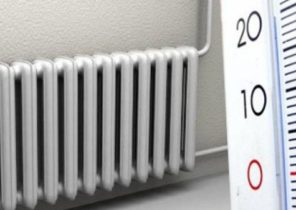
This year the Ukrainians, who put up with the need to pay property tax for a surprise. As from 1 January 2017 in the country increased minimum wages (to 3.2 thousand UAH), count and tax rate. Because the property tax is associated with “minimal”, writes UBR.
As the lawyer of law firm “Ilyashev and Partners” Galina Melnik, in connection with the increase in the minimum wage to the Tax code was amended to reduce the absolute value of the real estate tax.
Marginal tax rate fell from 3% to 1.5% per 1 sq. m. for Example, if a citizen is owned by him personally, the apartment has a total area of 100 squares, he must pay tax for 40 sq m (60 sq. m. — the preferential area).
In 2016, the minimum salary amounted to UAH 1378, thus, for 1 square, you had to pay a high 41,34 UAH (3%), and 40 squares — 1653,6 UAH. In 2017, the minimum wage is RS 3200 and the maximum tax — 48 UAH per square (1.5 percent). Accordingly, in 40 sqm you will have to pay UAH 1920 or 16% more than under the old rates.
But to pay the tax anew will have in 2018. By law, private citizens are required to remit the tax for the previous, i.e. 2016 — 41,34 UAH/sq. m.
However, the maximum you would pay is not everything. We will remind, the specific tax rate is determined by the decision of local governments to the maximum rate.
Local rules
Yet none of the major cities has not been established the maximum rate of 3%. In Kyiv, Chernihiv, Cherkasy, Ternopil, Khmelnytskyi, Chernivtsi, Lutsk, Uzhgorod, Kherson and Mykolaiv, the rate is 1% (13.78 hryvnia for 1 square). In Kharkiv, Dnipro, Zaporizhia, Odesa, Sumy, Zhytomyr, Vinnytsia and Ivano-Frankivsk — 2% (27,56 UAH), Lviv, Rivne and Kropiwnicki — 0,5% (6,89 UAH).
Recall that in 2015 the object of taxation is any immovable property, both residential and nonresidential. Residential real estate are: residential building (garden-type apartment buildings); extension to dwelling house; an apartment; a cottage; in the room communal. For nonresidential facilities include the hotel, retail and office buildings, garages, warehouses, as well as utility and auxiliary premises (barns, stables, garages, summer kitchens, workshops, cellars, sheds, boiler rooms etc.).
According to the lawyer AF “Gramatsky and Partners” Vitaly Tymchuk, as of the date of determination by local authorities of rates of the tax to 2017, was not aware of the increase in the minimum wage twice, the legislator determined the term which prior to the adoption by local authorities of new solutions on a frequent payers use the old, but with the factor of 0.5.
“For example, if the tax rate of 1% was set in 2016, then in 2017, pending a new decision, the tax will be (RS 3200 * 1%) * 0.5 but this is 16 UAH/sq m”, — says the lawyer MG TAX Nikita Trubka.
This nuance is important for enterprises, which, unlike the citizens calculate the tax yourself and pay him not for the past and for the current year, quarterly advance payments listing. Legal entities calculate the tax amount as at 1 January of the reporting year to 20 February of the same year served in the SFS at the location of the object Declaration by the annual amount in equal quarterly installments. The tax is paid quarterly by the 30th of the month following the reporting quarter.
The size of the total area of apartments and houses, exempt from taxation, has not changed. As a General rule, each owner of the object of taxation receives the benefit of 60 square meters for apartments and 120 square meters. m for houses regardless of their number, a total of not more than 180 sq. m.
But taxpayers can rely on benefits, which are also determined by local authorities.
How to get the benefits
According to the lawyer, ICF Legal Service Oleg Kotlyar, local authorities were empowered to establish exemptions from payment of property tax for properties located in their territorial jurisdiction. Benefits can be provided to individuals and businesses, religious or public organizations.
“The tax code does not define special requirements for the procedure of establishing exemptions, just pointing out that for real estate owned by natural persons, the privilege is established on the basis of their property status and income level. The exemption for non-residential property depends on the property being the object of taxation”, – said the lawyer law firm “Konnov and Sozanovsky” Irina Pavluk.
More detailed criteria in the legislation, giving right of choice to local authorities, since revenues from this tax are allocated to local budget.
Therefore, according to Pavlyuk, in practice it is possible to detect very different approaches in the provision of benefits. Very often, these decisions are formally cite the provisions of the tax and does not include any additional benefits. Basically, the benefit is provided in the form of a reduced rate.
“For example, in Kiev, at a total rate of 1% for privileged objects (such as hospices, homes for refugees, etc.) set rate of 0.01%. At the same time, in some settlements of Kiev region and other regions, including small villages, the local Council set the maximum rate for all objects and subjects of taxation”, — said the lawyer.
Also often the solutions to meet the exemption from taxation of objects belonging to combatants, members of families of heroes of Heavenly hundred. Extremely rare privileges are granted to specific subjects, mainly such beneficiaries are Church communities and families raising foster children.
“There are also a number of exceptions, which is nice to hear business. In particular, are not objects of taxation by industrial facilities, agricultural buildings, and Kiosks, and markets, plus non-productive real estate owned by religious organizations,” says Kotlyar.
According to the lawyer MG TAX Nikita Torebka from 1 January 2017 benefits for individuals do not apply to owners of apartments area of over 300 square metres (five times the size of non-taxable area). No discounts for real estate used by the owners for income (rent, leasing, for business, etc.).
The owners of apartments with an area of over 300 sqm and houses over 500 sqm will have to pay in addition to the established charges 25 thousand UAH per year for each of these objects or a part of it. This so-called “luxury tax” property owners will have to pay in 2018 at the end of 2017.
In turn, the objects located in the temporarily occupied territory or the territory of the contact line from 14 April 2014 until 31 December of the year of the end of hostilities are not subject to estate tax. Taxes paid during this period will be considered as overpayment.






